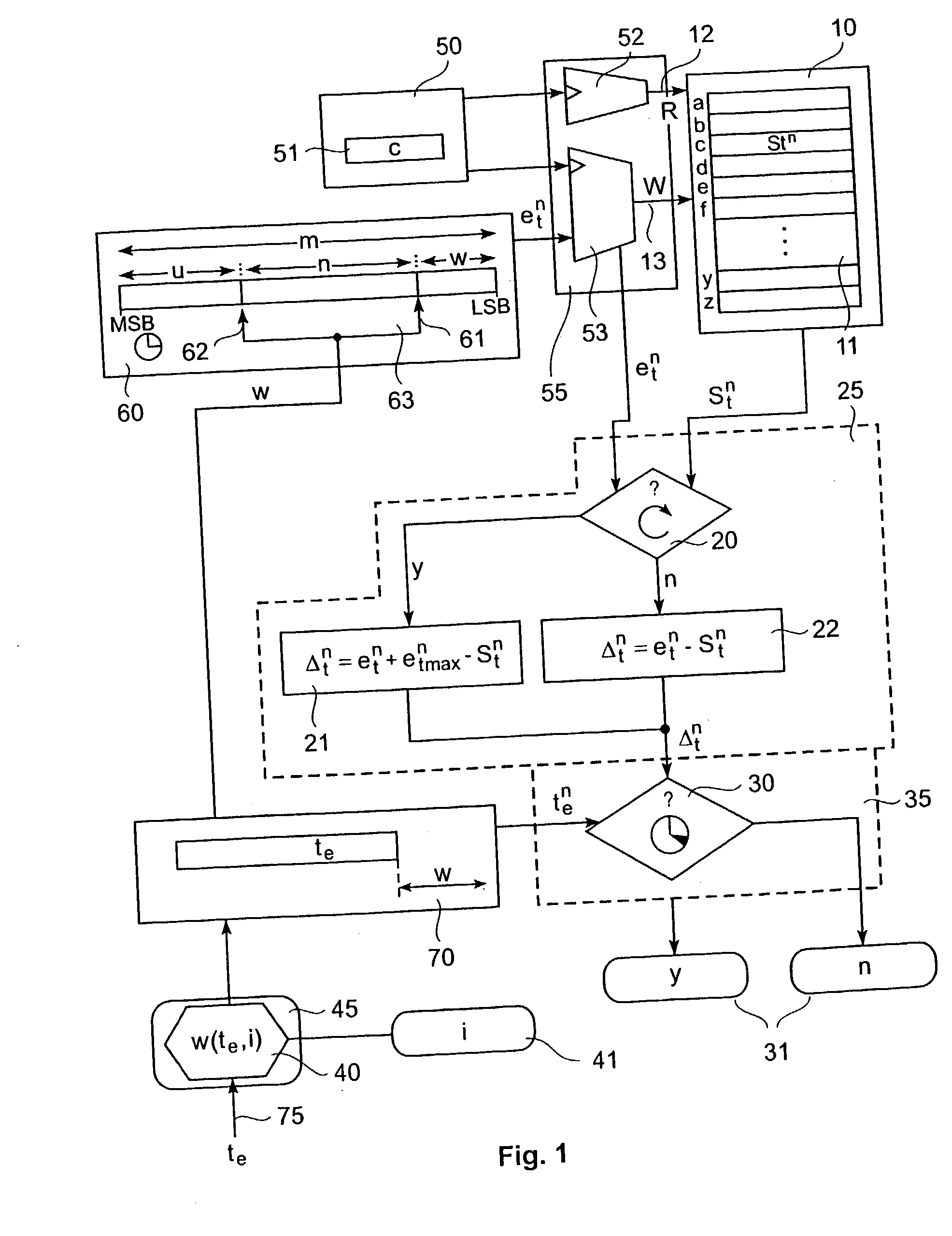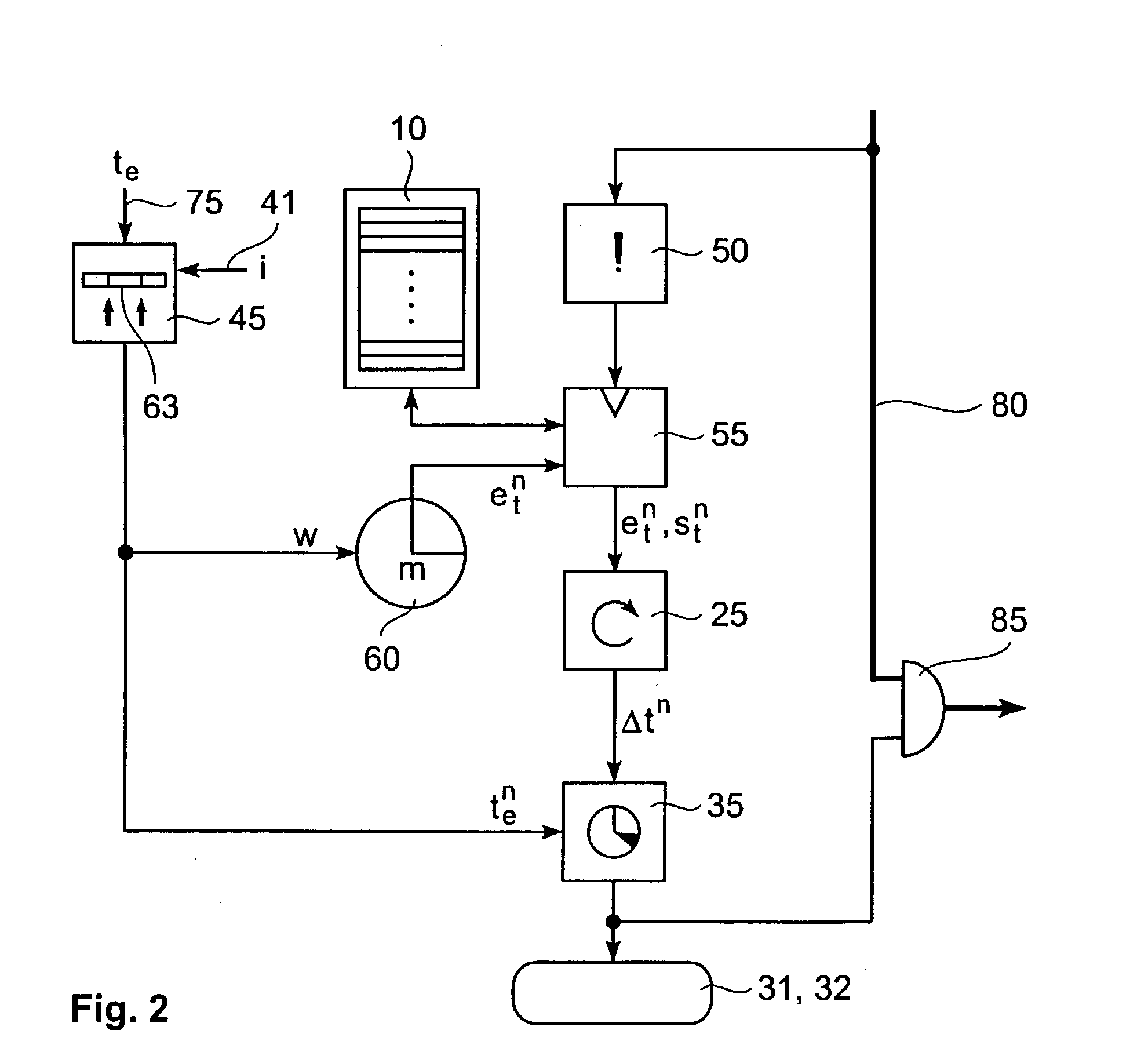Timeout determination method and apparatus
a timeout determination and timeout technology, applied in the field of timeout determination methods and apparatuses, can solve the problems of requiring considerable memory, critical memory size, and needing to update the entire state table in regular intervals
- Summary
- Abstract
- Description
- Claims
- Application Information
AI Technical Summary
Benefits of technology
Problems solved by technology
Method used
Image
Examples
Embodiment Construction
[0033] Referring now to the drawings, and more particularly to FIGS. 1-2, there are shown exemplary embodiments of the method and structures according to the present invention.
[0034] Exemplary Embodiments
[0035] In the following, the various exemplary embodiments of the invention are described. The superscribed index n is used to make clear that the indexed variable has a width of n bits.
[0036] FIG. 1 is a schematic diagram showing a mechanism for determining whether an event-occurrence lies after a predetermined timeout-value.
[0037] Specifically, an event-trigger input 50 is arranged at an input side of a memory read / write controller 55 for a time-stamp memory 10. Memory 10 is connected to a time-out determinator 35 via a time-difference determinator 25. A bit-position determinator 45 with a timeout-value input 75 and an inaccuracy-value input 41 is arranged at an input of a timeout-value memory 70. Memory 70 is connected to the time-out determinator 35 and to an m-bit time counter ...
PUM
 Login to View More
Login to View More Abstract
Description
Claims
Application Information
 Login to View More
Login to View More - R&D
- Intellectual Property
- Life Sciences
- Materials
- Tech Scout
- Unparalleled Data Quality
- Higher Quality Content
- 60% Fewer Hallucinations
Browse by: Latest US Patents, China's latest patents, Technical Efficacy Thesaurus, Application Domain, Technology Topic, Popular Technical Reports.
© 2025 PatSnap. All rights reserved.Legal|Privacy policy|Modern Slavery Act Transparency Statement|Sitemap|About US| Contact US: help@patsnap.com



